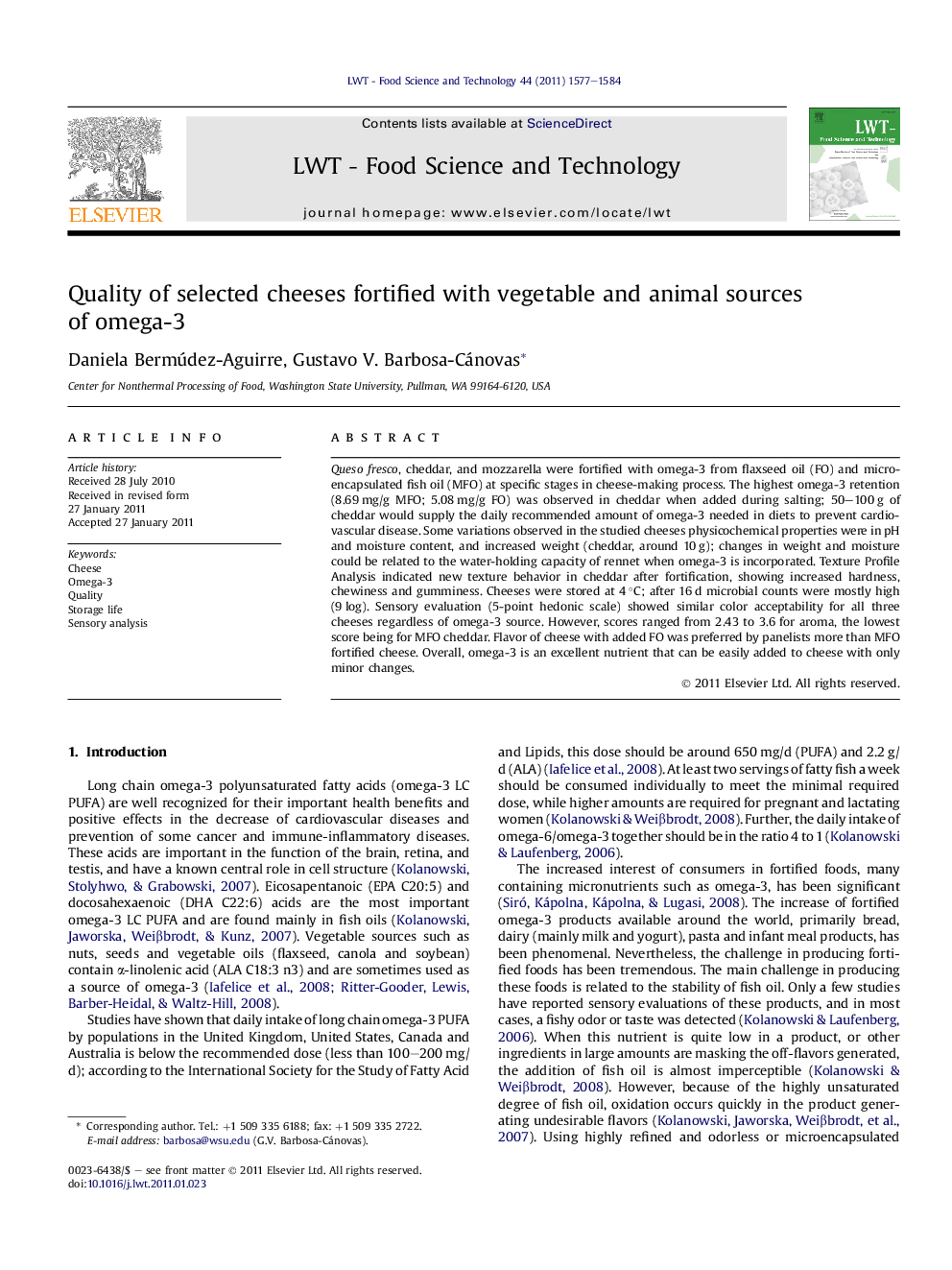| Article ID | Journal | Published Year | Pages | File Type |
|---|---|---|---|---|
| 4564102 | LWT - Food Science and Technology | 2011 | 8 Pages |
Queso fresco, cheddar, and mozzarella were fortified with omega-3 from flaxseed oil (FO) and microencapsulated fish oil (MFO) at specific stages in cheese-making process. The highest omega-3 retention (8.69 mg/g MFO; 5.08 mg/g FO) was observed in cheddar when added during salting; 50–100 g of cheddar would supply the daily recommended amount of omega-3 needed in diets to prevent cardiovascular disease. Some variations observed in the studied cheeses physicochemical properties were in pH and moisture content, and increased weight (cheddar, around 10 g); changes in weight and moisture could be related to the water-holding capacity of rennet when omega-3 is incorporated. Texture Profile Analysis indicated new texture behavior in cheddar after fortification, showing increased hardness, chewiness and gumminess. Cheeses were stored at 4 °C; after 16 d microbial counts were mostly high (9 log). Sensory evaluation (5-point hedonic scale) showed similar color acceptability for all three cheeses regardless of omega-3 source. However, scores ranged from 2.43 to 3.6 for aroma, the lowest score being for MFO cheddar. Flavor of cheese with added FO was preferred by panelists more than MFO fortified cheese. Overall, omega-3 is an excellent nutrient that can be easily added to cheese with only minor changes.
